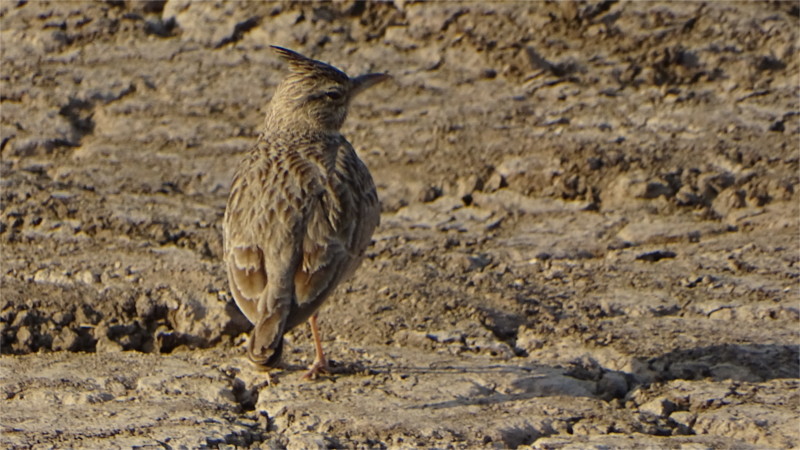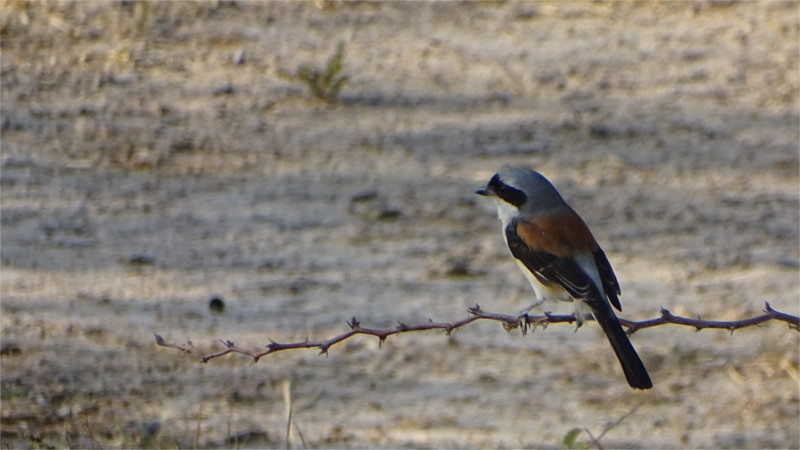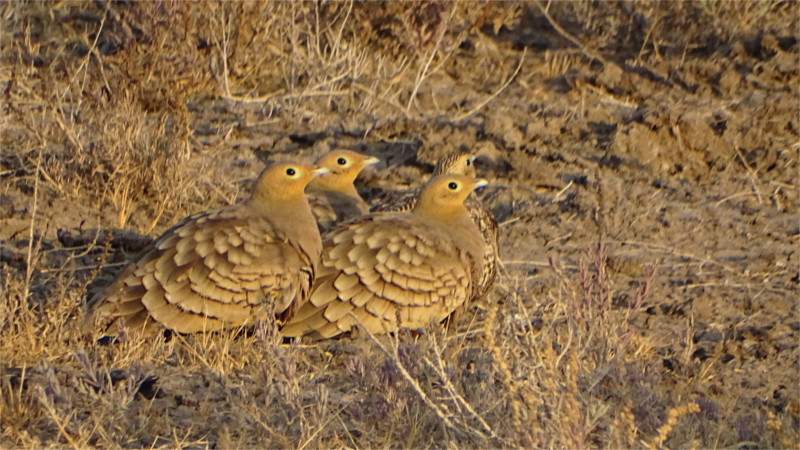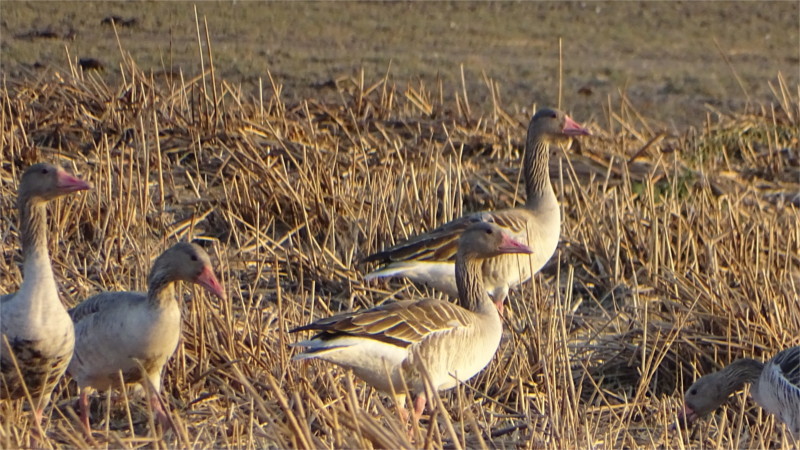Soon after sunrise the chill of a northern January is baked out of the air of the Rann of Kutch. An hour after that heat shimmers make it difficult to focus on the flat ground. By mid-morning mirages begin to appear, making the strange desert look even more strange. Very often I found it hard to spot birds on the ground.
The Crested Lark (Galerida cristata) is well camouflaged against the broken muddy floor of the desert. It wasn’t just the heat haze which made it difficult to see. I was staring at it without seeing it for a while. Then, when it moved its head, I could suddenly resolve it out of the background, and take a photo.
The beautiful Bay-backed shrike (Lanius vittatus) presented no such problem. It sat, as it always does, on a thorny bush, in the open, better to see and be seen. Shrikes keep sallying and returning to their perch, so once you see them they are easy to photograph. They have a habit of storing part of a catch on braches where they sit, which is perhaps why they return to their perches. It was sitting on a thorny branch of a bush, and I quickly scanned it for any signs of cached food the shrike may have placed on the thorns. I couldn’t spot any. Maybe the bird hadn’t found much to eat that day.
In my recent trips into deserts I have finally begun to recognize wheatears. This Desert Wheatear (Oenanthe deserti) sat high up on a thorn bush scanning its surroundings for the insects that it eats. I’m happy with these insectivores, since they always sit in the open and give people like me many good opportunities to take photos. Not like those rascals, the warblers, which tweet at you from thickets.
A year ago I’d seen Chestnut-bellied Sandgrouse (Pterocles exustus) for the first time. I hunkered down next to a shallow pond and waited for a huge flock of sandgrouse coming in to the water. Photography was hard then, because the grouse dip into the water quickly and take to the air again. This time I saw them hunkered down in the sparse grass in the desert, sitting completely immobile.
If I’d not been with experts, I would have had a tough time telling this Ashy-crowned Sparrow Lark (Eremopterix griseus) from its confusing cousin called the Black-crowned Sparrow Lark. Our jeep parked near it, and it did not consider us a threat. We had a long time to look at it and take photos. Eventually I decided that the best way to tell the difference was from the fact that this one did not have a black patch at the nape, which the other species does.
The Rann is marshy, dotted with extremely shallow sheets of water near which it is dangerous to drive. Jeeps bog down easily, and begin sinking in these places. Parked at the safe edge of one of these patches I took a photo of this flock of Greylag geese (Anser anser). They are very common birds, widely seen in India in winter. I would not mind a tee with the slogan “The Anser is Goose”.







Hihi, great shirt ideas, and photos too.
LikeLike
🙂
LikeLiked by 1 person
Beautiful pictures. Birds always bring a smile.
LikeLike
They do, don’t they! Thanks for the comment
LikeLiked by 1 person
I want a tee, too. “The Anser is Goose”!!! Lovely photos and descriptions.
LikeLike
Thanks. Merchandise!!
LikeLiked by 1 person
Lovely post and pictures.
LikeLike
Thanks so much
LikeLike
Amazing pictures and descriptions, complete with stories of how you captured those moments. Am always baffled by how you know the names of all the birds that you see. I only know of sparrows, crows, pigeons, parrots and the like. And, its shameful to say that I have a masters in Zoology (thank God not Ornithology).
LikeLiked by 1 person
I only show the birds I know the names of 🙂
LikeLiked by 2 people
And you know the names of soooo many!
LikeLike
If you start going out with expert birdwatchers and reading you’ll soon become an expert too, Birds are easy, trees and mosses are hard; too few experts to learn from.
LikeLiked by 1 person
I need to find one such person around me first, my bro-in-law is one, but he doesn’t live here.
You’re quite an expert on plants too 😀
LikeLike
If you are interested try out https://bngbirds.com/
They are in your town.
LikeLiked by 1 person
Thank you. I will check it out.
LikeLike
You are welcome.
LikeLike